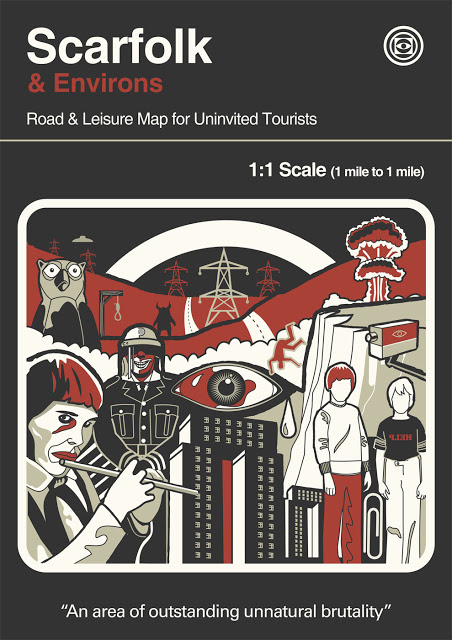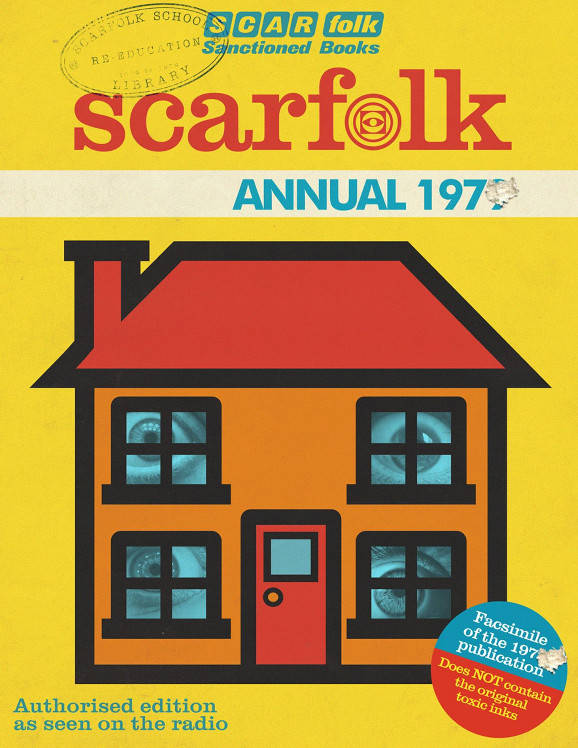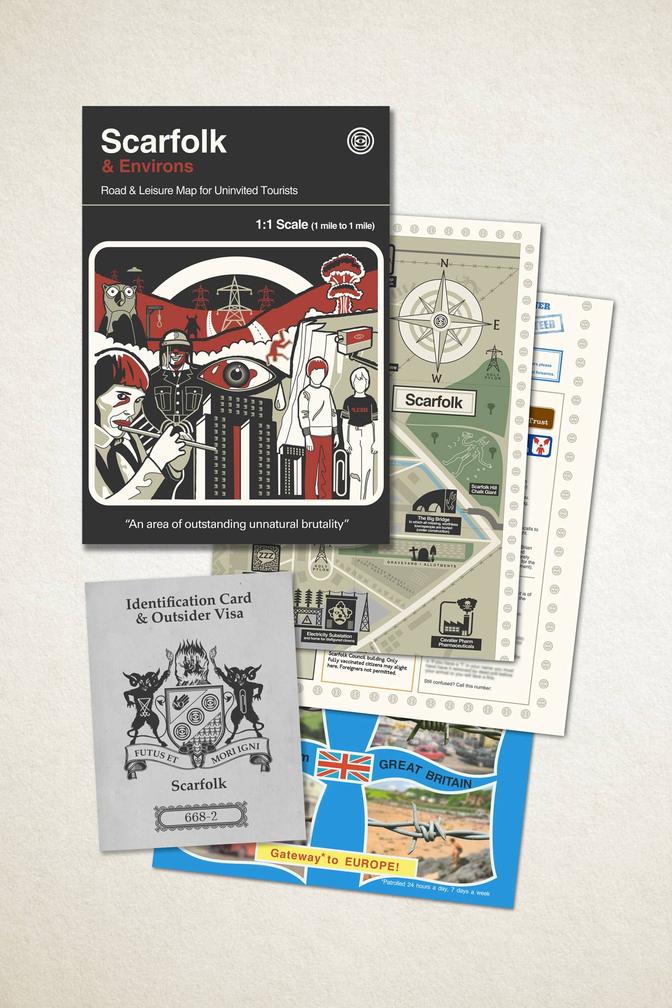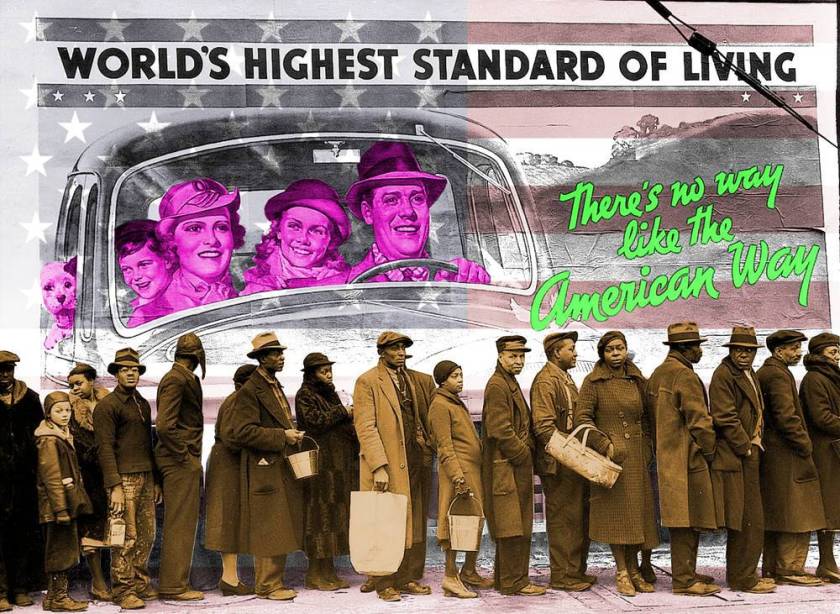
One of the great delights of this decade is @Scarfolk, @richard_littler's long-running art-project about a English horror-town trapped in an endless, looping Thatcherite decade, whose artifacts are pitch-perfect comments on our own daily lives.
1/
1/

The period Littler focuses on - the dawn of neoliberalism - is a turning point in our collective timeline, the ascendant moment of selfishness, the elevation of sociopathy to a virtue, the moment in which corporate personhood was elevated at the expense of human personhood.
2/
2/
As such, the parallels he is able to draw are incredible, savage and brilliant, augmented by his biting prose and his superb draftsmanship and outstanding design.
3/
3/
Littler's work was born digital, but it transitions VERY well to print. Last year's SCARFOLK ANNUAL was one of 2019's best art-books.
memex.craphound.com/2019/10/30/the…
4/
memex.craphound.com/2019/10/30/the…
4/

This year's addition to the print Scarfolk canon is "Scarfolk & Environs: Road & Leisure Map for Uninvited Tourists," endorsed by the likes of @billybragg and @Beathhigh.
scarfolk.blogspot.com/2020/11/scarfo…
5/
scarfolk.blogspot.com/2020/11/scarfo…
5/

For those of us who grew up poring over the endpaper maps in Lord of the Rings or the giant hex-paper Greyhawk maps in our D&D modules, this is a weirdly comforting and profoundly discomfiting artefact.
6/
6/
It retails for £12.00; Britons can buy it from Waterstones, Foyles, Blackwells or the Book Depository. There's also a web-exclusive run of 1,000 with Herb Lester that comes with "a Scarfolk bookmark made of genuine imitation leather."
herblester.com/products/scarf…
eof/
herblester.com/products/scarf…
eof/
• • •
Missing some Tweet in this thread? You can try to
force a refresh





